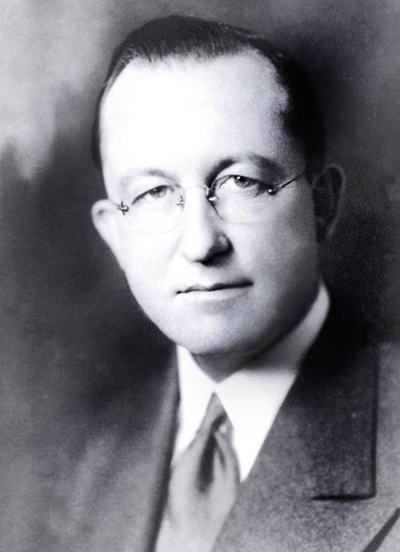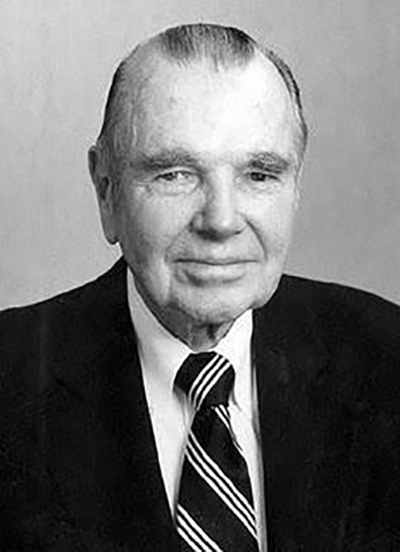About McKinsey & Company
McKinsey & Company, the most prestigious company of them all, usually ranks first even among the best. McKinsey consultants live by the motto “Different Worlds, One McKinsey,” helping companies become more agile, innovative, sustainable and inclusive; characteristics which are no longer a trade-off but rather a must. McKinsey & Co. offers “practical and enduring results” which has earned them their global prestige.
Despite being a global company; McKinsey & Co operates as a single partnership, united by the values and culture of the firm. Since 1926, the company has gathered around 30,000 employees from around the world; generating an astounding $10.6B in revenue in 2020. McKinsey & Co promotes their commitment to diversity, sustainability and a positive social impact within the firm and in the work they deliver to their clients.
McKinsey’s people come from very different backgrounds and experiences. They take a consistent approach to recruiting and skills development, so they can “quickly deliver the right team, with the right experience and expertise, to every client, anywhere in the world.” Although little is known about their clients, they are famous for having a lot of Public and Social Sector Projects, having worked with the White House, among others.
History


![]()
1920s
In 1926, James O. McKinsey left his position as a University of Chicago professor to establish his eponymous consulting firm. Being an expert in management accounting, he offered finance and budgeting services based on rigorous research and training. In 1933, Marvin Bower, with a JD and an MBA from Harvard which set the tone for the firm’s preference for impressive academic backgrounds, joined the firm and became the Managing Director for the next 20 years; articulating the consultant’s obligation to advocate for their own beliefs; which he believed was their most important form of quality control.
![]()
1940s
Its expansion across the US began in the 1940s and the firm committed to staying a single firm, with a shared mission and resources. In the 1950s, McKinsey opened its first international office in London; at the same time, McKinsey’s partners voted to undertake pro-bono projects for non-profit organizations.
![]()
1960s
In 1963, 3 of the 8 first women to be enrolled on the prestigious Harvard MBA program, Jane Glick, Jacqueline Browne, and Joan E. Griewank joined the firm, becoming the first female associates in the history of the firm. In that same year, the firm launched The McKinsey Quarterly, a magazine focused on reprinting articles made by McKinsey consultants and external thought leaders.
![]()
1990s & 2000s
The 90s marked the retirement of Marvin Bower, the promotion of Rajat Gupta, the firm’s first non-American-born Managing Director, its expansion into Asia and the establishment of the McKinsey Global Institute which would be further complemented in 2007 by the creation of McKinsey Solutions, a web-based portfolio to provide clients with industry insights, this portfolio includes Energy Insights, Periscope, Organizational Health Index, Horizon 360, Finalta, and Wave. That same year, McKinsey published the first global greenhouse-gas cost curve as the first of numerous efforts to impulse sustainability.
![]()
2010s
Nowadays, McKinsey & Company has focused on “disrupting itself,” as Professor Clayton Christensen says, to innovate and adapt to the rapidly evolving needs of its clients. Since 2010, it has founded McKinsey Analytics, with more than 200 experts, including analysts, data scientists, and data architects; Digital Labs, a thriving technology provider with more than 250 technologists; and McKinsey Design to help clients create groundbreaking products, services and experiences
| Website | https://www.mckinsey.com/ |
| Founder’s Name | James O. McKinsey |
| Founded | 1926, USA |
| Headquarters | 55 East 52nd Street New York, NY 10022 |
| Type | Incorporated Partnership |
| Locations | 130+ offices, 65+ countries (as of 2021) |
| Key People | Chief Executive: Bob Sternfel (as of 2021) |
| Number of Employees | 30,000 (as of 2021) |
| Revenue | $10.5 B (as of 2021) |
| Consulting Services | Digital, Implementation, M&A, Marketing & Sales, Operations, People & Organizational Performance, Risk & Resilience, Strategy & Corporate Finance, Sustainability, Transformation |
| Industries |
|
| Interesting fact | McKinsey was responsible for creating the Universal Product Code, aka, the barcode, which is now used on every product sold in the world. |
| Social Media |
Besides working on numerous projects throughout the year, McKinsey & Company is a firm which takes its social responsibility very seriously, putting a lot of effort into making tangible social changes in the communities that surround each of the firm’s offices. Besides this, in 2020, McKinsey supported more than 360 nonprofit organizations, dedicated more than 222,000 hours to global social responsibility initiatives, helped upskill more than 260,000 healthcare workers through a Generation coalition, provided pro bono research and analytics to Khan Academy to help develop a new flexible learning index which reached approximately 12 million students and helped Feeding America to keep up with the increasing demand which resulted in more than 6 billion meals provided.
Furthermore, McKinsey’s work in 2020 shined in three very important topics: COVID-19 responses, climate change and racial equity. In one year, McKinsey published more than 600 COVID related articles to help organizations become more resilient against the pandemic challenge. It also offset 100% of their GHG emissions and assisted its clients to become more sustainable for the future. Finally, it published a 10-step action plan to accelerate the change within the firm towards racial equity, which included the foundation of a Black Leadership Academy and Black Economic Institute, the donation of 5 million dollars to nonprofit organizations who combat racism and the commitment of 200 million in pro bono work to advance racial equity in the next 10 years.
As stated on their webpage, the purpose of McKinsey & Company is to help create positive and enduring change in the world. They contribute to this purpose through 3 main strategies: empowering their people to give back to their communities, operating the firm in ways that are socially responsible and environmentally sustainable, and working with their clients to intentionally address societal challenges.
McKinsey & Company forms part of the United Nations Global Compact, and through their policies and practices it follows the Ten Principles on human rights, environment, labor, and anti-corruption which also reflect the commitment of its values and Code of Professional Conduct.
McKinsey & Company is a firm which prides itself for its unique way of tackling problems, not only in terms of creativity but also in its culture and values that shape all its recommendations. McKinsey’s values can be divided into 3 main branches: professional standards, client’s performance and a great environment for people. Here are all the values of the firm as stated on their webpage:
Adhere to the highest professional standards
- put client interests ahead of the firm’s
- maintain high standards and conditions for client service
- observe high ethical standards
- preserve client confidences
- maintain an independent perspective
- manage client and firm resources cost-effectively
Improve our clients’ performance significantly
- follow the top-management approach
- pursue holistic impact
- use our global network to deliver the best of the firm to all clients
- bring innovations in management practice to clients
- build client capabilities to sustain improvement
- build enduring relationships based on trust
Create an unrivaled environment for exceptional people
- be nonhierarchical and inclusive
- sustain a caring meritocracy
- develop one another through apprenticeship and mentoring
- uphold the obligations to engage and dissent
- embrace diverse perspectives with curiosity and respect
- govern ourselves as a “one firm” partnership
What distinguishes McKinsey & Co?

Best-known brand name
Being the oldest firm of them all, McKinsey is the most well-known firm in the industry.
Highest prestige
Having worked with very high profile clients such as the White House, McKinsey is well known for its excellent work and results. This results in great expectations from their clients and the public in general.
Great compensation
McKinsey is known for charging 30% more on average than its counterparts, having gained the trust of its clients with a highly professional and structured working style. Most of this trust comes from the great work delivered by its consultants, so expect to be compensated accordingly
Excellent growth opportunities
Similar to the other consulting firms, McKinsey has a very clear established growth path within the firm; being able to escalate from Business Analyst to Partner in little more than 10 years.
Infinite exit opportunities
McKinsey is sometimes known as a “CEO Factory”, having produced the most Fortune 500 CEOs among the MBB. According to ABCNews, McKinsey alumni have a 1 in 690 chance of securing a CEO position at a publicly-traded company valued at a minimum of $2 billion in market capitalization.
Why work at McKinsey & Co?

- The most prestigious firm of them all: McKinsey has always taken first place as the most prestigious firm in the world, so if that’s something you are looking for, McKinsey is definitely the best choice.
- Immense learning opportunities: As a young professional or even an experienced hire, you will have excellent growth opportunities with a well-defined learning path which will help you hone your skills and prepare you for the future, whether you decide to stay or leave. You’ll be able to take advantage of some of the top training and development opportunities in the consulting profession.
- High-impact clients: You will get to know different business processes from a very diverse portfolio of industries, you will also work with very high-impact clients. If you are passionate about making a positive impact on the world, McKinsey offers you an unparalleled platform to do so.
- Dynamic experiences: As with other consulting firms, you’ll be traveling a lot (not so much since the pandemic hit but you will still be able to do so) and your social calendar will be filled with all the social gatherings that the firm prepares for its employees. The compensation and benefits that you will get are also among the best in the industry.
- Great values and thorough code of behavior: Although McKinsey is known for being less comradely than the other firms, everyone works by the same set of values and code of behavior which defines the culture of the projects and the firm overall.
Family & wellness
- adoption assistance, employee assistance program, flexible spending account, IVF/fertility coverage
Insurance
- Dental, Medical, Disability, Life, Vision, Therapy/counseling
Money
- 401(k), extended healthcare benefits, bereavement leave, discount programs, paid volunteer days, pension/SEP, Phone bill coverage, sabbatical program, sick days
Professional development
- Networking events, tuition reimbursement
Workplace
- donation matching, formal WFH policy (partial/full), free drinks/snacks.
Following an undergrad or non-MBA candidate career growth path, you will first be hired as a Business Analyst. After 2 years, you will be required to get your MBA (which can be covered in exchange for working 2 more years at the firm after completion) to move up into an Associate role.
After spending 2 or 3 years at the Associate level, you will be promoted to Engagement Manager following a thorough evaluation. Subsequently, after 3 to 5 years of service as a manager, you’ll move up in the pyramid and become Associate Principal and finally Principal/Partner.
| Career Path | Time |
|---|---|
| Business Analyst | 2 years |
| Associate | 2 – 3 years |
| Engagement Manager | 3 – 5 years |
| Associate Principal | 3 – 5 years |
Salary Overview of MBAs
In the USA, incoming MBA hires receive a base salary of $165,000 which sets a really high standard throughout your stay in the firm. This can be further enhanced by performance bonuses which can add up to $35,000 for a total of $200,000 for MBA hires. Although not as impressive, Master’s-level hires receive a base salary of $90,000 plus performance bonuses up to $30,000, with a signing bonus of $5000. Like in the other firms, these numbers increase as the consultants get promoted from business analyst to principal/partner. Apart from these, you will also receive 19 days of vacation and a $10,000 aid for relocation.
Salary Overview of Non-MBAs
Although salary changes from country to country; a good estimate based on the average salary of multiple offices would be $77,400 per year as a Business Analyst, which are usually undergrads, M.A/M.S or experienced hires with 2 or 3 years in the industry. Besides the base salary, Business Analysts can also receive performance bonuses which usually amount to $11,000 per year.
| Role | Work experience | United Kingdom | USA | Australia |
|---|---|---|---|---|
| Business Analyst | 1-3 years | 48,296 GBP/year = 65,456 USD |
94,132 USD/year | 97,000 AUD/year = 69,646 USD |
McKinsey has remained the #1 Consulting Company in North America based on the Vault ranking which is based on a weighted formula: 30% prestige; 15% firm culture; 15% satisfaction; 10% compensation; 10% work-life balance; 10% level of challenge; 5% overall business outlook; and 5% promotion policies.
- #3 Top 50 Consulting Firms (Vault)
- #1 Most Prestigious Consulting Firms (Vault)
- #1 Best Consulting Firms for Economic Consulting (Vault)
- Top 40 of UK’s Consulting firms for women & gender diversity (Business in the Community)
McKinsey & Co cares a lot about its employees, you will be able to experience a lot of professional growth within the firm as well as connect with others through multiple social events and programs. McKinsey also has multiple networks to support minorities within the firm such as LGBTQ+, Black, Hispano & Latino, Veterans, Asians communities where “mentorship and community create an unparalleled sense of belonging and growth.”
You can learn more about the supporting networks here: Meet our people
You can learn more about life at McKinsey here: Careers Blog
- Sheryl Sandberg, COO at Facebook and founder of Leanin.org
- Wolfgang Bernhard, Former CEO of Mercedes-AMG, Volkswagen AG and former Chairman of Daimler
- Helmut Panke, Former Chairman & CEO of BMW
- Bob Haas, Chairman of Levi Strauss & Co
- Vittorio Colao, CEO of Vodafone
- Ian Narev, CEO of CBA
- James McNerney, Former Chairman, President and CEO of Boeing
- Chelsea Clinton, daughter of former US President Bill Clinton
- Brian Salsberg, Senior Vice President, Global Strategy at AVON
- Jeff Skilling, Ex Enron CEO (now of somewhat lesser repute)
| Insights | McKinsey Insights |
| Events | McKinsey upcoming events |
| Reports | 2020 Social Responsibility Report |
| News | McKinsey News |
| Outcomes | McKinsey Impacts |
The process
McKinsey & Company work tirelessly to continuously improve their hiring process, since their consultants are their biggest asset; because of that, McKinsey’s hiring process has evolved over the years, the most recent change being the replacement of the paper-based test with the Imbellus Problem Solving Game in 2017.
Currently, the hiring process at McKinsey is as follows:
- CV and Cover Letter Screening
- Round 1 Imbellus Problem-Solving Game
- Round 2 Case Interviews / 5 min Fit interview
- Round 3 Case Interviews / 15 min Fit Interview + 1:1 Personal Experience Interview
After successfully passing the CV and Cover Letter Screening, you will receive a link to the Imbellus Problem Solving Game and you will have 7 days to complete it. If you are among the top performing candidates of that recruiting season, you will then be invited for the first round of interviews which usually involve 2 or 3 case interviews with 5 min left for some Fit questions. After 2 weeks or so, you will know if you passed to the second round of interviews, which is fairly similar to the first round but with higher standards for the candidates performances. Finally, if you are able to complete all your cases satisfactorily and show an adequate match to the firm’s culture and value you will receive an offer.
Although McKinsey tries to standardize the process, there might be some variations depending on the office; so make sure to check beforehand with your recruiter.
CV and Cover Letter
When delivering your CV and Cover Letter, you should aim to demonstrate how you possess the skills and attributes that McKinsey is looking for in its candidates with real-life examples. For starters, you should have clear illustrations for your problem-solving, personal impact and leadership skills.
In your Cover Letter, you should also bear in mind that you must demonstrate that you are a good fit to the firm in terms of culture and values. You should also be prepared to answer the 3 main fit questions for consultants: Why consulting? Why McKinsey? Why you?
Imbellus Problem-Solving Game
A gamified test, designed by the assessment company Imbellus, of about 60-80 minutes created to evaluate candidates’ skills, including: critical thinking, decision-making, meta-cognition, situational awareness and systems thinking.
The candidates are presented with 2 (out of a possible 5) mini-games where they have to complete multiple tasks and solve a problem. The most common games are Ecosystem Building (where you are presented with different rules to create a sustainable ecosystem) and Plant Defense (very similar to Plants vs. Zombies).
If you want to know more about McKinsey’s Problem-Solving Game, click here for a more detailed explanation.
Case Interviews
Recently, McKinsey has moved towards a more standardized interviewer-led case interview system with a 4-point scoring system. Despite this fact, you are still expected to show some leadership and initiative during your interview so practicing interviewee-led cases is also a good idea.
Apply to our bootcamp to learn how to crack this and any other firm case interviews!
Personal Fit questions
The personal fit questions have the objective of assessing how you would personally match with the firm and the consultants within it. They are also looking to evaluate 4 core traits that they are looking for in their candidates: leadership, entrepreneurial drive, personal impact and problem-solving. Some common fit questions are as follows:
- Tell me about your biggest career achievement to date
- Tell me about a time you overcame a significant challenge at work
- Tell me about a time where you resolved an important disagreement with a colleague
- Tell me about a time when you demonstrated exceptional leadership
- Tell me about when you convinced a colleague to adopt a different viewpoint from one they initially held
What is McKinsey looking for?
McKinsey wants its consultants to excel in 4 main areas, you can safely assume that they are looking for these skills in the people they hire:
- Problem Solving: This means having the ability to break any problem down into solvable parts (MECE Structure) and follow a logical path in the analysis and your proposed solution.
- Achieving: McKinsey is looking for people who have a strong will of achievement, this can be shown in multiple ways; if you are an undergrad student, this could mean getting the highest marks among your class or winning prizes and competitions.
- Personal Impact: McKinsey prides itself on its multiple projects and programs dedicated to making a positive impact in the world and wants its consultants to equally match its purpose and values.
- Leadership: This could mean being able to lead people into creating new teams or projects as much as proposing new and innovative ideas. McKinsey wants its people to not be afraid of taking the lead to solve a problem.
Positive & Negative Reviews
Positive:
- Amazing brand to be associated with. Truly cares for people. Good company during Covid, good insurance and other benefits.
- Freedom to work. Young folks with great ideas, analytical, technical and organizational skills. Free to express views. Completes work in a given timeframe.
- My second school. Learned all the corporate and process ethics, work culture, client handling, etc.
- Firm gives a good opportunity to bring your ideas, new initiatives, process change, change management, etc.
- It’s a very collaborative and at times competitive place. But I would say the overall experience is very good.
Negative:
- Improper appraisals
- Stressful
- Long hours and lots of stress but good quality work and great salary benefits
- Work-life balance is considered one of the priorities, however certain admin roles don’t really have much flexibility to work from home
- No advancement, politics plays a key role in the designation you are working
Overall rating: 4.3
Work-Life Balance 3.6
“McKinsey was my first job and I was there for 7 years. It has a steep learning curve, tremendous learning experience, international exposure, and a strategic mindset.”
“Freedom to work. Young folks with great ideas, analytical, technical and organizational skills. Free to express views. Completes work in a given timeframe.”
Compensation & benefits 4.2
“Amazing brand to be associated with. Truly cares for people. Good company during Covid, good insurance and other benefits.”
Job Security & Advancement 3.8
“McKinsey is an amazing place to learn, grow and drive a lot of impact in different industries and functions. It’s demanding in every sense but also very rewarding. It can be very fast-paced, but there is a strong supportive culture, colleagues tend to be very helpful, and help is always found if you need it.”
Management 3.9
“McKinsey is a place where you can find challenges every day. The deadlines are short and learning is enormous. They have scheduled breaks which keeps the employees at ease and also some recreational spaces to relax and have a chat with your colleagues. They also have a vast pantry where you can enjoy a meal with your close ones at work. The management is friendly and is always open for you to walk in and share your thoughts and challenges.”
Culture 4.1
“McKinsey is an amazing place to learn, grow and drive a lot of impact in different industries and functions. It’s demanding in every sense but also very rewarding. It can be very fast-paced, but there is a strong supportive culture, colleagues tend to be very helpful, and help is always found if you need it.”
Conclusion
McKinsey is and will probably continue to be the most prestigious consulting firm in the world, so if that’s something you are looking for in your job-search, McKinsey should definitely be your number one option. McKinsey prides itself on taking good care of its people, with a continuous learning path, good salary and great benefits. It has a culture of “work hard, play hard” with strenuous working hours but with same-level compensation. It usually works with high-level clients with high-impact projects, targeting not only the client’s own expectations but also its own social responsibility objectives of the time such as sustainability, human rights and diversity.




